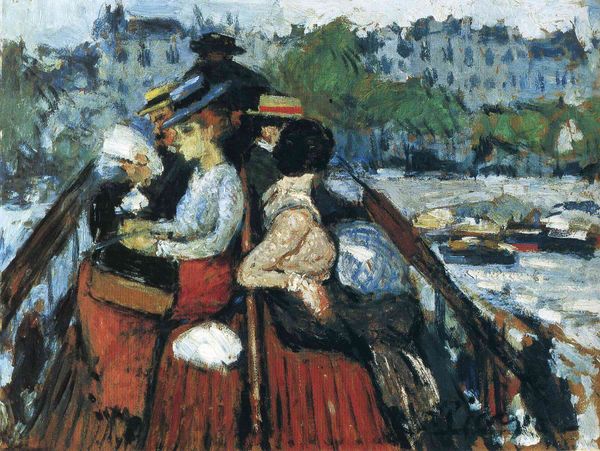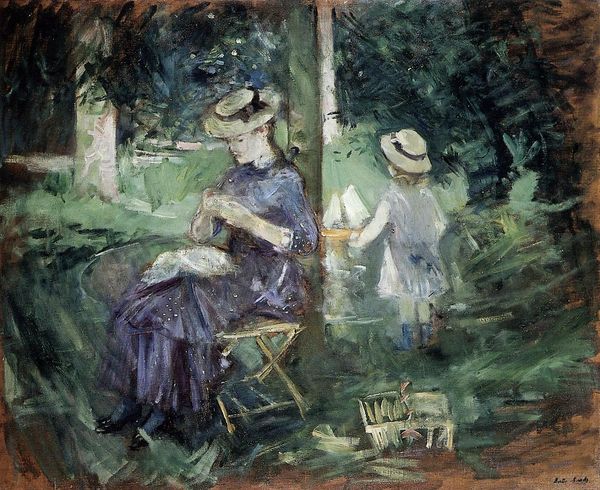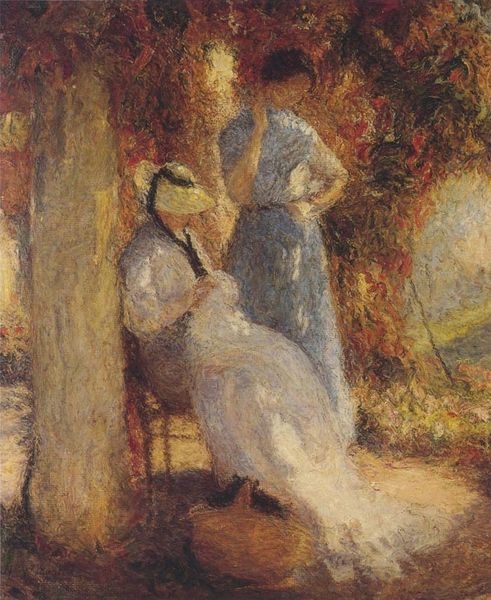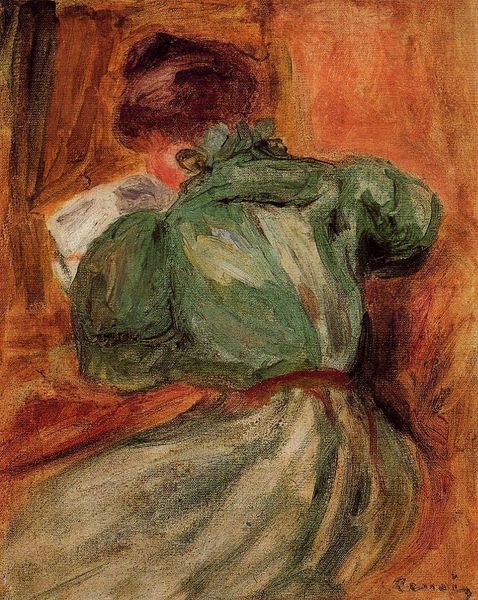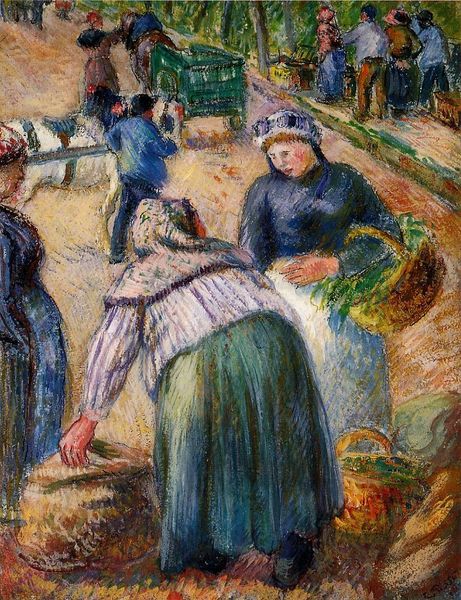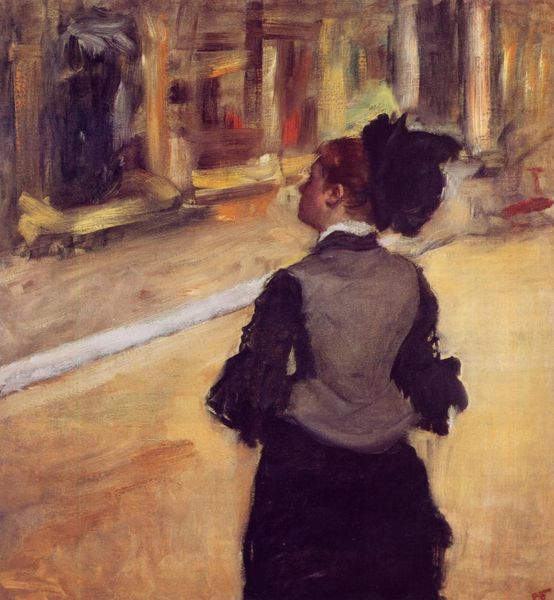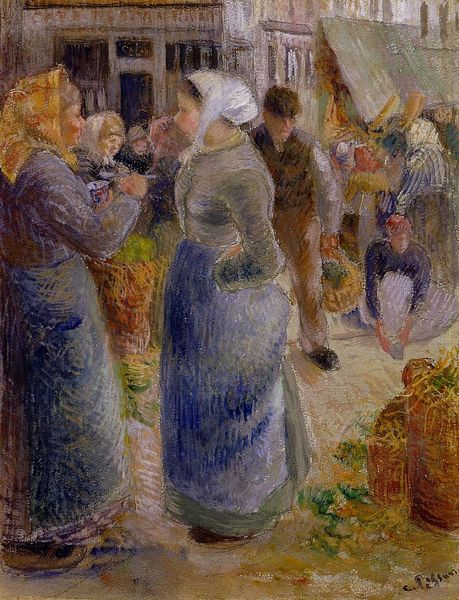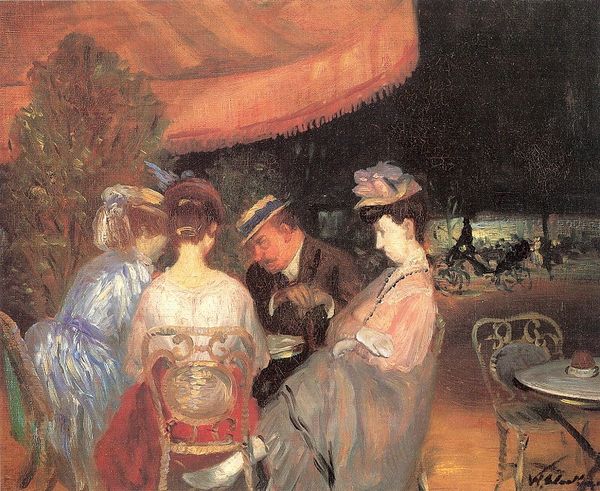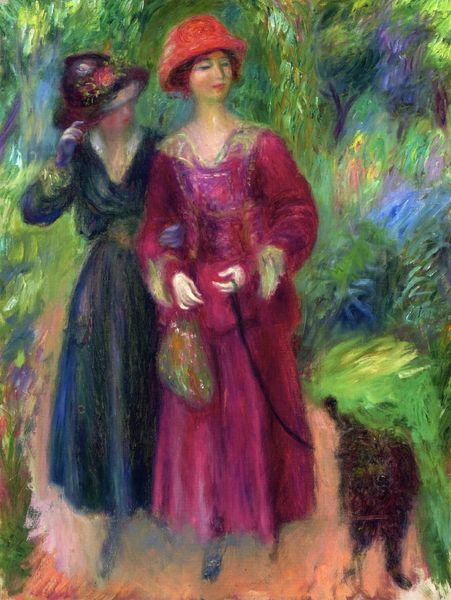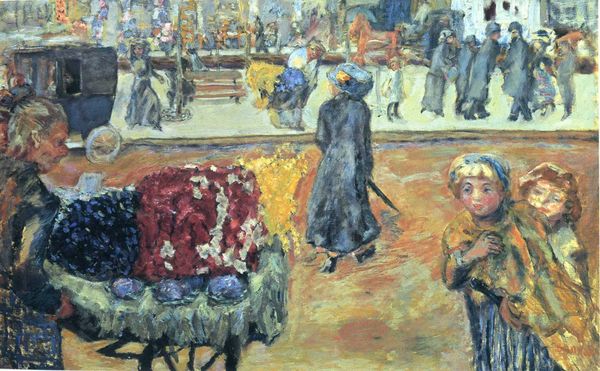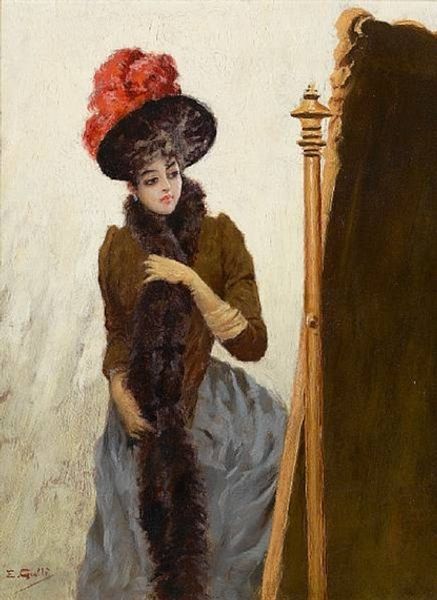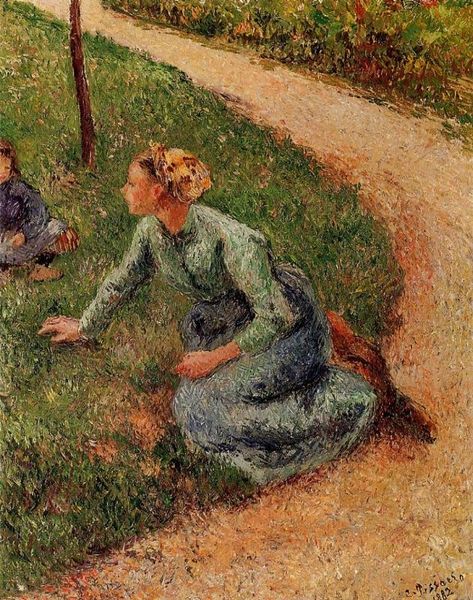
painting, pastel
#
portrait
#
painting
#
impressionism
#
french
#
figuration
#
oil painting
#
intimism
#
france
#
cityscape
#
pastel
Copyright: Public domain
Editor: Edgar Degas’ "Mary Cassatt at the Louvre," made around 1880 in pastel and oil, is so evocative! There's a stillness, a kind of hushed reverence suggested by the two figures inside the museum. What draws your attention in this piece? Curator: Beyond the implied narrative, I'm struck by the materiality. Consider the production of pastels themselves in 19th century France - pigments carefully ground, mixed with a binder, and formed into sticks. Degas is depicting fellow female artist Mary Cassatt in a space traditionally dominated by men and immortalising the moment. But I see this also as Cassatt and Degas both engaging with a material exchange; as makers both complicit with and resisting a system of material exchange, the labour and context that gives rise to "art" in a particular time and place. What is this 'art' that's being consumed here, and how is it commodified? Editor: That's a fascinating angle! I hadn't really considered the making of the pastel sticks themselves as being integral to the piece's meaning. Are you suggesting the materials reflect something deeper about Cassatt's role as a female artist? Curator: Precisely. Think about the availability, access, and cost of these materials. The creation and subsequent consumption of the finished work positions both Degas and Cassatt within a network of social relations, conditioned by industrial capitalism. It makes me consider class, too; whose labor created these pigments? Editor: So, by examining the material aspects, we gain a deeper understanding of the socio-economic conditions in which Cassatt operated. That's something I'll definitely think about next time I'm in a museum! Curator: Exactly, seeing art this way invites critical engagement with the systems that make it possible, yesterday and today.
Comments
No comments
Be the first to comment and join the conversation on the ultimate creative platform.
